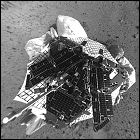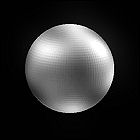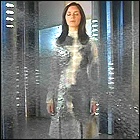 Sci-Fi Channel airs the 148th episode of The Outer Limits.
Sci-Fi Channel airs the 148th episode of The Outer Limits.
This series is not yet chronicled in the LogBook. You could join theLogBook team and write this guide or support the webmaster’s efforts to expand the site.
 Sci-Fi Channel airs the 148th episode of The Outer Limits.
Sci-Fi Channel airs the 148th episode of The Outer Limits.
This series is not yet chronicled in the LogBook. You could join theLogBook team and write this guide or support the webmaster’s efforts to expand the site.
 The first of two new American Mars rovers lands successfully on the red planet. The Mars rover Spirit enters the Martian atmosphere (and cleaves a path right through a dust storm), deploying thick layers of airbags that allow it to bounce safely until landing upright. This is the same landing system employed by the Pathfinder mission in 1997, but the unmanned robot probe in this case is much more sophisticated. Among the primary scientific objectives of Spirit’s mission is to determine if water existed on the surface of Mars for a significant length of time. The Spirit rover will undergo a series of diagnostics and won’t begin its mobile mission for several days. Its identical twin, a rover named Opportunity, will land in three weeks.
The first of two new American Mars rovers lands successfully on the red planet. The Mars rover Spirit enters the Martian atmosphere (and cleaves a path right through a dust storm), deploying thick layers of airbags that allow it to bounce safely until landing upright. This is the same landing system employed by the Pathfinder mission in 1997, but the unmanned robot probe in this case is much more sophisticated. Among the primary scientific objectives of Spirit’s mission is to determine if water existed on the surface of Mars for a significant length of time. The Spirit rover will undergo a series of diagnostics and won’t begin its mobile mission for several days. Its identical twin, a rover named Opportunity, will land in three weeks.
 Scientists are already aware that Pluto is really cold, but recent observations suggest that it’s even colder than they had imagined. New radio telescope measurements of Pluto’s surface indicate that it’s a brisk -382 degrees Fahrenheit (scientists had earlier estimated a positively summery -364). Part of the reason for the slight chill in the air – if indeed there was any there – is that Pluto is on the outbound train. The tiny planet’s highly inclined orbit isn’t centered around the sun, while the solar system’s other worlds are more or less centered; part of Pluto’s orbit carries it further away from the sun and “under” the plane shared by the other planets. Curiously enough, however, the surface of Charon – Pluto’s nearly-identical-twin moon – is determined to be warmer than Pluto itself. The readings are taken by the Submillimeter Array in Hawaii by astronomers at the Harvard-Smithsonian Center for Astrophysics.
Scientists are already aware that Pluto is really cold, but recent observations suggest that it’s even colder than they had imagined. New radio telescope measurements of Pluto’s surface indicate that it’s a brisk -382 degrees Fahrenheit (scientists had earlier estimated a positively summery -364). Part of the reason for the slight chill in the air – if indeed there was any there – is that Pluto is on the outbound train. The tiny planet’s highly inclined orbit isn’t centered around the sun, while the solar system’s other worlds are more or less centered; part of Pluto’s orbit carries it further away from the sun and “under” the plane shared by the other planets. Curiously enough, however, the surface of Charon – Pluto’s nearly-identical-twin moon – is determined to be warmer than Pluto itself. The readings are taken by the Submillimeter Array in Hawaii by astronomers at the Harvard-Smithsonian Center for Astrophysics.
 Sci-Fi Channel airs the 70th episode of Stargate Atlantis.
Sci-Fi Channel airs the 70th episode of Stargate Atlantis. ![]()